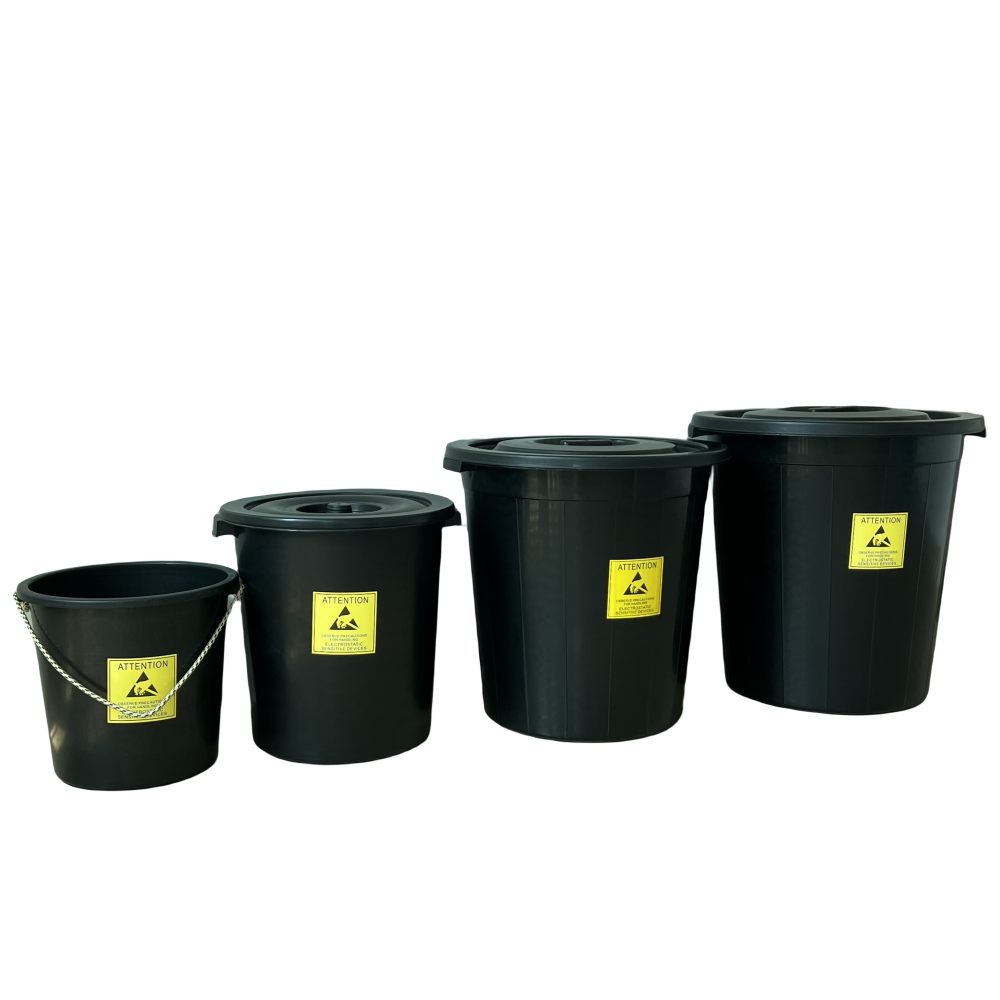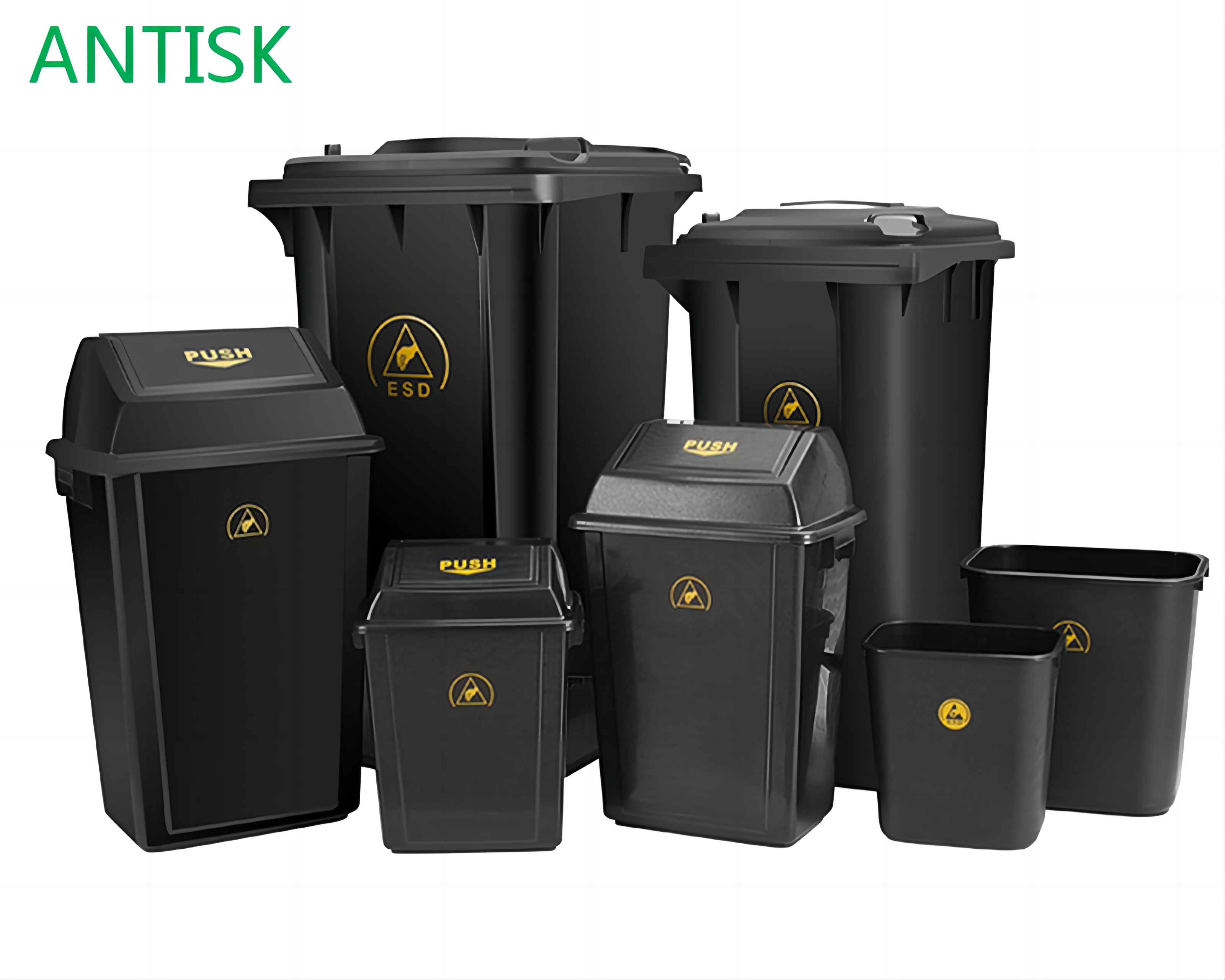Is an ESD Wastebasket Really Necessary?
At first glance, an ESD (Electrostatic Discharge) wastebasket mayseemunnecessary
—especially if it remains stationary under a workstation. After all, how could a simple trash bin pose a threat to sensitive electronic components?
However, real-world scenarios reveal several situations where a standard wastebasket could indeed endanger ESD-sensitive devices
due to electrostatic fields. Here are a few critical examples:
1. Work Surface Cleaning
When an operator lifts a wastebasket to the edge of the workstation to collect debris,
any exposed electronic components on the surface risk exposure to harmful electrostatic fields—unless they are stored in a shielded container.
2. Lead Trimming & PCB Cleaning
During operations like trimming component leads or cleaning PCBs with aerosols,
some operators hold the board over the wastebasket to catch clippings or solvent runoff. Often, the PCB is placed deep inside the bin to ensure all waste is captured.
This brings sensitive electronics dangerously close to high electrostatic fields.
3. Aisle Proximity to Moving Carts
Wastebaskets placed near production aisles where carts transport ESD-sensitive devices can violate ANSI/ESD S2020 standards, which mandate that any object generating 2000V or more (measured at 1 inch) must remain at least 12 inches away from sensitive components. An ESD-safe wastebasket eliminates this risk.
4. Trash Removal Process
Even the simple act of emptying trash generates static through friction—whether moving the bin or pulling out plastic liners.
Without proper grounding, these actions can expose nearby electronics to damaging discharges.
While some companies may enforce policies to prevent these scenarios, human error and procedural lapses can still occur. ESD wastebaskets provide an added layer of protection,
ensuring that trash handling never becomes an ESD hazard.
What Do ESD Standards Say?
ANSI/ESD S20.20 requires the removal of all insulators from an ESD Protected Area (EPA).
Although the standard doesn’t explicitly mention wastebaskets, most conventional bins and trash bags are made of insulative plastics,
which can generate significant static charges.
Given that ESD damage is often invisible and irreversible, proactive prevention is crucial. ESD-safe wastebaskets eliminate this hidden risk, ensuring full compliance and safeguarding sensitive electronics.
DONGGUAN ANTISK ELECTRONIC CO.,LTD offers three ESD wastebaskets in static dissipative polypropylene :
RS20-20L ESD Round Waste Bin without lid
RS40-40L ESD Round Waste Bin with lid
RS60-60L ESD Round Waste Bin with lid
RS50-50L ESD Round Waste Bin with lid
SK1759-240L ESD Waste Bin
SK1758-120L ESD Waste Bin
SK1757-60L ESD Waste Bin with Lid
SK1756-40L ESD Waste Bin With Lid
SK1757-1-60L ESD Waste Bin without Lid
SK1756-1 -40L ESD Waste Bin Without Lid
SK1755-35L ESD Waste Bin without lid
SK1753-20L ESD Waste Bin With Lid
SK1753-1-20L ESD Waste Bin Without Lid
SK1752-1-5L ESD Waste Bin -Square Shape
SK1751-15L ESD Waste Bin -Round Shape
SK1751-1 -ESD Permanent Square Waste Bin 16 liters
If a liner is to be used for easier maintenance, DONGGUAN ELECTRONIC CO.,LTD offers conductive.








